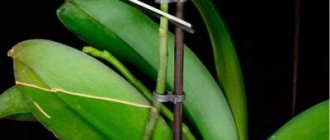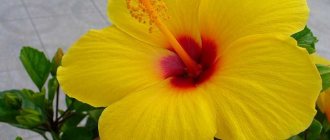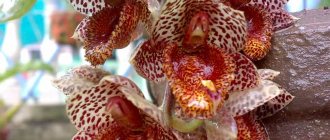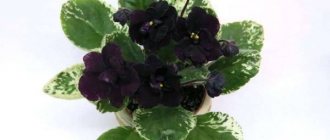Why are violets crossed?
Flower growers cross violets, wanting to get new varieties that are not yet in the home collection. But this work requires a lot of experience and knowledge.
OLYMPUS DIGITAL CAMERA
Everything is not as simple as it might seem at first glance. The selection of violets begins with:
- determining the goal: the desired color of buds, leaves and other characteristics;
- choosing healthy parents;
- breeding a variety that was previously unknown.
Even painstaking work does not guarantee results, since it is difficult for a gardener without a biological education to guess which characteristics will prevail in the bred Saintpaulia. The transfer of characteristics from a selected pair to a new plant is based on the interaction of recessive and dominant traits. So, if you cross a purple flower with a pink one, the new variety will have blue and purple petals. If you independently pollinate a pair with shaggy and simple buds, there is a high probability of getting a Saintpaulia with smooth flowers.
Classification by type of variegation
Crown variegation "Champion"
In children, starters, and young rosettes, the new leaves growing from the center have a bright yellow (lemon), light yellow, almost white, yellow with pink color. In mature rosettes, the leaves may become completely green or variegation may appear periodically. But there are varieties in which crown variegation is stable and appears to a greater or lesser extent constantly.
N-Robinson:
EK-Boykov gold:
Variety Sprite-ly, young rosette - bright crown variegation:
Adult socket:
Fringing variegation "Tommy Lowe"
This type of variegation is the most common among variegated violets and the most stable. Depending on the variety, the variegation may be white, cream or pink, or a combination.
The size of the colored areas, depending on the variety, can vary from a thin strip along the edge of the leaf plate
Jolly Frills:
up to almost the entire area of the leaf plate:
RS-Goldfish:
This type of variegation is characterized by the fact that the colored areas are located along the edge of the leaf blade, and the center is green to a greater or lesser extent.
Mosaic variegation
This type of variegation in violets is quite rare, both in standards and miniatures. Colored spots, streaks and stripes of silver-white, light green, pink or a combination thereof are located in the center of the leaf plate, and the edges of the leaf plate are green:
Witch Doctor:
Breeding methods at home
Violet selection is carried out using self-pollination. To do this, select a healthy pair of flowers to obtain the desired color. Pollen from the anther of another specimen is applied to the pistil of 1 plant using a needle. Pollen ripens 5 days after the bud opens. The pistil is ready for pollination after a drop of liquid appears on its surface.
After crossing, the formation of a box with seeds similar to dark brown dust will begin. The seed will be fully ripe in six months. By this time, the stem will dry out and the box can be easily separated from the bush. It is opened with a needle, the seeds are taken out and dried at room temperature. They are ready for planting 2-3 weeks after ripening. Germination lasts up to 6 months.
Leaves
Saintpaulia easily propagates from a leaf under the inflorescence. It is enough to break it off or cut it and place it in boiled water with the addition of 1 tablet of activated carbon. Or you can immediately plant the leaf in the soil mixture and wait for roots to take root. It is recommended to transplant sprouts into a pot when the roots are 1-2 cm long. Such propagation is used for sale. When divided by a leaf, the new plant will take on all the characteristics of the mother plant. But this does not happen with all types of Saintpaulia.
Violets are not crossed using castings, but some varieties, when propagated by cuttings, can obtain a different color of buds and foliage.
Saintpaulia chimeras from a leaf do not look like the mother flower. Here there is room for the imagination of a violet breeder to run wild. To propagate the chimera, it is impossible to use leaf cuttings; dividing the bush or rooting violet flower stalks with 2 small leaves is a more suitable option. Stepchildren appear in the axils of the leaves. To stimulate their growth, cut off the top of the plant.
Up to 20% of new plants from a fantasy violet bush also do not repeat the characteristics of an adult plant. Each leaf can produce a bush of a different color. Therefore, leaves can also be used to select fantasy violets.
Is cross-pollination possible?
Theoretically, Saintpaulia can pollinate itself, but in practice this rarely happens. Violets can cross-pollinate if there is an air conditioner or fan nearby, a cat wanders near the flower, or the pot is in a strong draft. In these cases, action must be taken. After all, when white and purple Saintpaulia are in close proximity, a plant with pink petals is obtained.
Cross-pollination most often occurs when 2 types of violets are grown in 1 pot at once. If they are not transplanted in time, then instead of 2 different flowers the owner will receive 1 plant, and it will be difficult to guess its future color.
How to get 3-5 new varieties on half a standard shelf.
For some reason, it is believed that violet plants require large areas for selection. This is wrong.
A standard shelf is 130 cm wide and 50 cm deep. Half a shelf is enough to:
- develop 3-5 new varieties from one cross
- earn 10,000 rubles . monthly .
Traditions
In Olga Dudina’s article “This is how my violets grow” you can see how violets are traditionally placed:
This free arrangement allows you to form beautiful rosettes and is used when varietal violets are being prepared to be displayed at an exhibition (market) or for photography.
Selection
In selection, the picture is completely different. Seedlings from one crossing will give 100 rosettes of the first generation after crossing. Of these, 85-95 rosettes will be rejected for uninteresting buds. No one will see defective sockets.
But no one will see the remaining 5-15 sockets either. Due to the tendency of violets to sport, they must first be tested for stability by propagating cuttings. And only after verification will second-generation rosettes appear, by which the sustainability of the variety will be judged. Another part of the varieties will be rejected and 3-5 full-fledged varieties will be obtained.
So
The first generation after crossing (100 rosettes) is needed to select the most beautiful violets.
And the second generation - to test the most beautiful violets of the first generation for stability.
Only second generation sockets are photographed and exhibited at the exhibition (market).
5 stereotypes
The legend about the large areas needed for violet selection comes from 5 traditional collector stereotypes.
Stereotype 1 . When collectors begin breeding, they raise the first generation after crossing as if this generation will be exhibited at an exhibition. It is appropriate to once again show the varietal violets of Olga Dudina, prepared by her for exhibitions:
Such cultivation is suitable only for varietal violets, which in 90% of cases reliably repeat themselves in cuttings.
Refusal of stereotype No. 1.
The first generation after crossing cannot even be called varietal violets. This is a working material that will be evaluated by the breeder alone and from which 85-95% of rosettes will be rejected. It makes no sense to raise the first generation “for exhibition.”
Stereotype No. 2 . Collectors are accustomed to simultaneously appreciating the beauty of the bud and the shape of the rosette in violets. Because of this, by inertia, in the first generation after crossing, 100 seedlings are grown so that both the bud and the rosette can be assessed simultaneously. But the “exhibition” technique of growing violets is very expensive in terms of space.
Refusal of stereotype No. 2.
Since selection does not end with the first generation, it is easier to transfer the assessment of the shape of the rosette to the second generation after crossing. Then:
- in the first generation we appreciate the beauty of the bud and do not pay attention to the shape of the rosette
- In the second generation, we evaluate not only the stability of the selected outlets, but also the harmony of the outlet.
Stereotype 3. A violet should not grow “hands up.”
Refusal of stereotype No. 3.
Violets deeply don’t care how they grow, hands down or hands up. If only there was enough light. Horizontally elongated leaves in a rosette are just a human fashion.
The film “Admiral” historically correctly shows how violets were grown before the revolution, when there was no cult of violets:
The buds of violets of that time did not have such variety as they do now. There was no fantasy, there was no border. But I wanted variety. Therefore, they planted several different violets in one pot, resulting in a palisade of leaves and several flowers of different colors. Beautiful and pleasing to the eye.
Much later, after the Second World War, violets with buds of different colors began to be grown. The American Society of Violet Lovers was formed, and exhibitions began to be held. And violets began to be grown individually and valued individually. It was then that the fashion for freely grown violets, arms to the side or even down, arose.
But if necessary, violets will grow completely freely “hands up” if necessary.
Don't believe me? Ask a bonsai pine if it agrees to grow in a bowl and be 1000 times smaller than it should be:
“I agree,” the bonsai pine will answer, it’s better to live like this than not to live at all.”
Therefore, “hands up” for violets are children's toys. It costs nothing for violets to raise their leaves and grow their arms up if the breeder politely asks them to do so.
Stereotype 4. Violet needs a lot of land to grow, at least 25x25 cm in area.
Refusal of stereotype No. 4. This stereotype is created by the fact that the place for a rosette is associated with the size of the crown. But look carefully under the violet crown. The violet needs very little soil. The typical violet is grown in a pot with a diameter of 8-9 cm at the top. The rule is that the diameter of the pot should be 3 times smaller than the diameter of the crown.
Stereotype 5. If the diameter of the top of a pot is 8 cm, then such a pot will occupy an area of 8x8 cm.
Refusal of stereotype No. 5. If instead of a pot we plant a violet in the ground, then its roots will need a much smaller area than 8x8 cm:
- The pots are conical and the average diameter of a violet pot is about 6-7 cm
- When planted in the ground, the roots develop not only a circle with a radius of 6-7 cm, but also the corners of the square.
- The roots do not spread along the surface, but immediately try to go 30-45° down into the depths. This increases the stability of the violet. (It would be more correct to grow violets in conical pots, where the top is narrow and the bottom is wide. In such pots it is inconvenient to transfer the violet and the top of the pot is made wide, with a diameter of 8-9 cm). The roots at the bottom require a much smaller diameter than the top diameter of the pot.
As a result, to grow one violet in the ground, a parallelepiped with an area of 6x6 cm on top and a depth equal to the height of the pot is enough
Let's discard 5 collector stereotypes and grow 3-5 varieties on half a standard shelf.
Compact breeding practice
1st generation.
We refuse to grow seedlings to rosettes in separate pots, standing in rows of 25x25 cm. We grow rosettes in one 50x65 cm tray, plant them in 10 rows, 10 pieces in each row. A total of 100 sockets will fit into the pallet. For the moral consolation of the rosettes (or the hostess?), we put next to it a photo of a 45-meter pine tree grown in a cat’s bowl:
Earth. Each outlet will have an area of 5x6.5 cm and the volume of soil will be exactly the same as in a standard pot. Violets won't even feel the difference.
Crown. The crown will not have a traditional area with a diameter of 25 cm (490 sq. cm), but a rectangle of 5 × 6.5 cm (area 32.5 sq. cm). The reduction in area by 15 times must be compensated. If earlier the lamps were at a distance of 30 cm from the sockets, then to select “hands up” the lamps need to be brought closer 4 times and the distance reduced to 7-8 cm. Illumination increases as the square of the distance, so approaching 4 times will increase the illumination by 16 times, which is quite enough.
For leaves, there is no difference whether direct lighting falls on their area or whether the lighting is 15 times stronger, but will fall with oblique rays. The absolute value of leaf illumination will remain the same.
It is also impossible to burn leaves with fluorescent lamps at a distance of 8 cm. Firstly, it shines from above, and the heat goes up, not down. Secondly, fluorescent lamps practically do not heat up and have the temperature of the human body.
At a distance of 5 cm under fluorescent lamps, the air is only 1 degree warmer than room air.
2nd generation
We independently reject 80 rosettes with uninteresting buds. At the remaining 20 rosettes we photograph the buds and put them up for voting on the website Fialki.ru (contact me). The community will help determine the 5-10 most beautiful buds. We check rosettes with these buds for stability during cuttings and the beauty of the rosette. To do this, we grow second-generation violets freely. For this, the same area of half a shelf is quite enough.
After the second generation has bloomed for the second time, we select resistant violets from them, this will be 5-7 rosettes. They are not yet fully-fledged varieties; let’s call them pre-varieties.
We put up photos of pre-varieties (bud plus entire rosette) for voting on the Fialki.ru website to determine the relative popularity of each pre-varietal.
3rd generation, replication
Several rosettes of each pre-variety are grown in it. It is necessary to grow rosettes of each variety exactly in the proportion shown by the vote. More popular varieties should have more rosettes, less popular varieties should have fewer.
Cuttings from the third generation of violets will be sold. In addition to replication, the third generation serves as another test of stability. If in the third generation some preliminary variety turns out to be unstable, it is rejected.
But the third generation will not be photographed. Cuttings from them will be sold based on photographs of their mothers from the second generation. Therefore, the third generation, like the first, is grown in a compact way, up to 100 rosettes on half a standard shelf.
After the rosettes from the third generation have flourished, the final culling is carried out. Those pre-sorts that did not repeat their mothers 1:1 are rejected. This is approximately 1/3 of all pre-sorts (and third generation sockets).
Sales
3-5 pre-varieties that have demonstrated resistance are solemnly declared as varieties and put on sale as cuttings. To do this, the breeder has up to 70 “hands up” rosettes.
Finance
We believe that Korshunova’s new variety costs 200 rubles. in the first year of sale
(photo source).
The second year the price drops to 150-100 rubles. We take the average price of a new item as 150 rubles.
The rosette produces 3 cuttings per month. 70 rosettes with new varieties will produce 210 cuttings every month. Multiply by 150 rubles.
We get that from half a standard shelf of a rack 65×50 cm you can get 31.5 thousand rubles. every month for the first 2 years. On average for 2 years, 50 thousand rubles each. per month, i.e. 756 t.r..
To do this, you need to raise 3 generations (we put 1.5 years on each) and sell new products for 2 years, about 6 years in total.
We divide 756 tr. for 6 years and 12 months. As a result, half a shelf brings in an average of 10,500 rubles. monthly for 6 years.
Final numbers
So, half the shelf brings 10 thousand rubles. every month, if you do breeding in a compact form.
If you engage in selective breeding “spread out”, then you will need 15 times more area. Then the income from half the shelf will drop 15 times to 700 rubles per month. The amount is not very large and is similar to what collectors already have from half the shelf when selling ready-made varieties. (On half of the shelf you can place 10 sockets, each will give 3 leaves per month, 30 leaves per month will be multiplied by 30 rubles - 900 rubles per month from half the shelf). Moreover, the first money from collectors comes in 1.5-2 years.
That is why most collectors believe that it is not very profitable to engage in selection. The space in the apartments is limited. It’s faster to buy a cutting and start selling violet cuttings in 1.5-2 years than to wait 5 years, allocate huge areas for selection and, on average, get the same money.
Shelving for compact selection
For “compact” selection at home, slightly different racks are used. The main thing about it is 15 times intense lighting.
It is convenient for lighting to use a block of office lamps LPO65-4x18 (4 lamps of 18 W), square with a side of 61 cm:
The power supply of the unit is approximately 2 times higher than traditional 2 lamps per shelf depth. This unit also uses professional mirror light reflectors, which doubles the light output, reduces heat generation and makes the light distribution uniform. Position the block so that the lamps go from left to right, and not away from you into the depth of the shelf. Then a minimum of light will fall into the room and all the light will be on the violets.
You can even afford to buy an LED office lamp for selection:
- works silently
- doesn't heat up
- light output is 1.8 times stronger than that of fluorescent lamps
- spectrum completely matches sunlight
- service life - up to 100 thousand hours (22 years with daily 12-hour work)
The current cost is 10 tr, but the price of LED lamps is constantly falling. In addition, only one lamp is needed for selection, and not 12 office lamps for 6 shelves.
If you don’t have enough money for an LED lamp, take the most expensive office lamp with fluorescent lamps. They are of higher quality than their cheap counterparts.
Pull-out shelves
The lamp block hangs very low (5-8 cm above the sockets). To maintain a tray with sockets, it is convenient to make it retractable, like drawers in a closet:
Pull-out shelves are already used in violet racks (see article Rack with pull-out shelves):
Shelving shape
Conventional racks are forced to be made wide, 135 cm, due to long fluorescent lamps. Shelving for compact selection uses square lighting blocks 61x61 cm.
A typical selection rack is a soldier cabinet.
If you order a cabinet for selection, it makes sense to make not only the trays with sockets retractable, but also the lighting units. This will make their repair easier.
Retractable shelf mechanisms allow you not only to extend the tray or lighting unit as much as possible, but also to pull them out of the cabinet altogether if necessary.
To reduce the cost of a selection cabinet, it is better not to make stationary shelves in it, but to attach the extension mechanisms directly to the pallets and to the square lighting units.
The 61x61 cm pallet is quite heavy. Consider that there are 100 sockets with ground on a pallet plus the weight of the pallet. The extension mechanism must be designed to support this weight. If there are several such shelves in the “soldier”, then they will balance one extended shelf. If you only have one pull-out shelf, make sure that when pulled out it does not weigh down the cabinet. If necessary, secure the cabinet to the wall.
Another way to reduce the cost. Instead of a pull-out mechanism, make runners on the sides of the rack (like in an oven). It will be possible to slide the lighting unit or pallets into them. True, in this case, to service the violets, you will have to completely remove the pallets from the cabinet. Not all women will be able to do this.
If you can’t find pallets 61x61 cm, you can order boxes made of plywood (MDF) 61x61 cm and approximately 10 cm high. They will need to be insulated from moisture from the inside and filled with earth mixture.
You may find it more convenient to water your violets from the bottom, because it will be difficult to water the palisade under the crown. Then you need to provide a bottom watering system in the pan.
When the lamp hangs over the violets, traditional admiring “on the go” is impossible. To inspect the violets you will need to pull out the shelf. Therefore, it makes sense to close the rack with a door to increase humidity. You can make it glass.
Built-in lamp
For lockable cabinets, it is more convenient to use a square lamp LVO14-4x40 “600x600”, built into office suspended ceilings. It costs less because it has no sidewalls:
Its size is standard 60x60 cm. If the aesthetics of the shelving are not too much of a concern, then recessed lamps can also be used for open shelving.
Mini-rack for selection
For very small apartments there is another half of the lighting unit, “LPO65-2´18-001 UHL4”. It has a size of 61x28 cm and a height of 9 cm. 50 plants can fit under it when grown compactly.
Ready-made grow boxes
Ready-made boxes with equipment for compact selection are sold, they are called growboxes:
You can buy either a complete box or just the internal hardware. You can get an estimate here.
Summary
1. Unlike the collection cycle (raise a violet from a cutting to a rosette for an exhibition), selection consists of several stages. A beautiful rosette shape is needed only at one stage and is not required at other stages. It makes no sense to try to obtain beautifully formed rosettes at each stage of selection in a “collector’s way.”
2. Compact selection technology makes it possible to reduce the area required for selection by 15 times.
3. The same technology can be used to grow rosettes from which only cuttings will be sold. There are quite enough buds on such rosettes to reject varieties that have blossomed inappropriately.
4. Another main direction to increase the impact of selection. To speed up flowering, you can use the accumulated arsenal:
- accelerating seed germination - growth stimulants, seed germination on foam rubber, oxygen or ultrasound treatment,...
- forcing flowers - chemicals, fumigation with smoke, hot steam, fertilizing with carbon dioxide,...
- Gestapo methods of forcing them to bloom - cut off the roots, pour boiling water on them, cut them out... with them, violets begin to bloom after 8.5 months from the rooting of the cuttings.
In small areas this is all much easier to organize. Since the pallets are completely removable, it is easy to organize the impact on each pallet separately.
5. Switching to hydroponics is another way to dramatically speed up the production of blooming violets and reduce the time for care:
6. Use the power of community to cull varieties. You will rarely guess which flower will be the best to buy from you. And the community will unmistakably point out those pre-varieties that will be especially popular (example). The community will even indicate in numbers which varieties will be successful and to what extent. This will allow you to grow the varieties needed by the market exactly in the quantities in which the market will demand them. The monetary return in this case will be 3-5 times higher than if you select according to your taste. See the article "Recommended prices determined by demand"
2 more ways to increase the volume of breeding work on the same areas
- Move from standard selection to mini selection
- Leave pollination and obtaining seeds for yourself, and shift all the rest of the work to those who have large areas.
See articles:
- Division of labor in the selection of violets (Saintpaulia)
- Project "Team Selection"
Rooting in soil mixture
For planting seeds or rooting leaf cuttings of Saintpaulia varieties of chimera or fantasy, a special substrate is used. Loose, breathable soil is best suited for violets. Soil from the garden is not suitable for growing flowers. It may be unsuitable in terms of acidity and density. It is advisable to plant the flower in a slightly acidic environment.
You can purchase a ready-made substrate at a flower shop or prepare it yourself. To do this, take 1 part of leaf humus, washed sand, moss and turf soil from the garden bed, 0.5 - perlite or charcoal, 3 - peat. Perlite or charcoal is added to disinfect and maintain optimal humidity levels.
For planting seeds or leaves, a small pot with a diameter of 4 cm and holes in the bottom for drainage is suitable. Over time, grown sprouts are transplanted into larger containers, but only after the young plant is twice the size of the container.
There are 2 ways to root leaf cuttings: in soil and water. For the first method, the cut leaf is dipped in a manganese solution and deepened 1.5 cm into the soil. It is advisable to place the pot in a warm, sunny place and protect it from drafts. You can cover it with a jar or a transparent plastic bag. Water the cuttings only after the top layer of the substrate has dried. In the second option, the leaf is transferred to the ground when it has already sprouted small roots.
When planting seeds, they are mixed with fine-grained sand and sown. There is no need to cover with a layer of soil. Place the container with soil in a well-lit place. Cover the top with glass, which should be lifted periodically to ventilate the surface of the substrate. It is recommended to constantly irrigate the soil and ensure that it does not dry out. Already grown shoots are transplanted into a separate container.
When and how are seeds collected?
To use the seeds for further propagation of violets, they must be collected correctly. It is difficult to track the moment of full ripening, so at home it is better to remove the box from the peduncle in advance so that the seeds do not fall into the same pot when the doors open on their own. This should be done when the peduncle dries out and the fruit turns brown.
The main thing is that the seeds are viable. This may not happen if the box is removed too early. If you collect the fruits 3-4 weeks before the natural opening of the fruit, then the germination of the seeds will be as much as 80%.
After separating the fruit capsule from the violet, it must be finally dried in a warm room. This will take 1-3 weeks. You can open the dried box with the tip of an ordinary needle. The seeds are hidden inside the box.
They need to be poured onto a white sheet of paper - this way the seeds are better visible.
Caring for violets after propagation
Caring for young shoots is similar to caring for adult Saintpaulias. After rooting, it is advisable to lower the ambient temperature from +27°C to +20...+22°C. Humidity should be maintained at 50%. Daylight hours for proper development of sprouts should be 12-14 hours. In winter, the shoots are illuminated with fluorescent lamps.
A young plant needs more frequent irrigation. When watering, you need to make sure that drops of water do not fall on the leaves. If this happens, rot may form. It is best to water the shoots through a tray. They pour water into it and wait until the moisture leaves. The remains are drained.
More perlite or coal is added to the soil for transplanting sprouts to prevent rotting of the root system, which is not yet fully formed.
What is your most valuable flower from your collection?
Now this is an airy, dancing, openwork AV-Lake Fairy and a solemn AV-Bohemian Rhapsody. Three days ago in the “favorites” there was a neat tender AV-Strawberry. For a week, the long-flowering striper AB-Vitriol and the lovely watercolor AB-Tender Age shared first place. I don’t skimp on diminutive epithets, because every little violet of mine is worthy of admiration.
Yellow
As you know, pansies in their primitive form had a bluish tint. No one has ever seen them yellow in nature. Therefore, the breeders were given the task of developing a new type of pansy for all lovers of this plant. It was still not possible to achieve a rich, contrasting, deep yellow color. But time does not stand still; in the future, specialists will be able to do this. All yellow pansies are pale, darkening a little with age and each new flowering. Well-known Saintpaulias of this type include:
- Golden dragon (looks like yellow daffodils or cockerels, medium-sized foliage, large buds, fringed, elegant flowers).
- Lemon kiss (cream color with yellow rays of varying intensity, lush, star-shaped flowers - 5-6 cm in diameter, leaves - oval, medium).
- Yellow rose (with an orange or purple tint, the rosette is dark green, the petals have large waves, darkens at the end of flowering).
The subspecies cannot be called very common; it is more rare, since real patriots of indoor plants keep such flowerpots. Yellow pansies require careful care and constant attention. They need to be replanted frequently into fresh soil.
Important! If the optimal microclimate conditions in the room are violated, watering with low-quality water, or using depleted soil, Saintpaulias of this variety remain white or cream-colored and rarely bear fruit, quickly becoming infected with fungi.
Choosing a leaf for planting
The future life of the plant will depend on the leaf you choose; approach this moment responsibly. If you pick up your violet and carefully examine the structure of the rosette (the place where the leaves grow), you will see that the violet's leaves grow in rows. If you start counting from the bottom, this will be the first row; it is not recommended to take leaves for propagation from this row, since they are old and will not produce children for a long time when transplanted. It is also not advisable to take a leaf from the middle of the rosette; in most cases they are small; near the center there is a high probability that you will damage the growing point of the violet - the consequences may not be predictable. The most optimal place to obtain planting material will be the second or third row from the bottom. These leaves are quite young, strong and will quickly produce young offspring. All that remains is to choose which leaf we will use for propagation; there are several conditions:
- The leaf should be healthy, with a bright color characteristic of your plant type.
- It should not have any yellow spots, scratches, fractures, signs of damage, or pests.
- The sheet should be elastic - keep its shape well.
If you brought planting material from an exhibition or from friends and it withered on the road, be sure to immerse it in clean warm water, lightly tinted with potassium permanganate for a couple of hours. Then let the leaf dry. Having decided on the choice of leaf, we move on, and the next operation in turn is cutting and preparing the leaf for planting.
A little history
It is difficult to find a person who has not heard anything about growing indoor violets. However, in the botanical world, professionals know them under a completely different “name” - Saintpaulia. This is the name that is reflected in all specialized literature and highly specialized publications, plant classifiers. But for simplicity, we will use the name generally accepted among gardeners. The description of violets requires mentioning from the very beginning that breeders have created many varieties of this ornamental crop.
It can be annual or perennial, but always has a short stem. It holds rosettes of foliage resembling a circle, oval or heart. The varieties differ precisely in the size of the rosette. Violet roots are always thin and spread over a large area. This plant blooms for 9 months.
The wild ancestors of violets live in Africa
They were first noticed by the commandant of the German colonial possessions, Walter Saint-Paul (in whose honor the botanical name was given). True Saintpaulia grows only in the Usambara Mountains in Tanzania.
Some subspecies have been found on Kenyan territory. Plants are concentrated near waterfalls and in river terraces.
There is often information that Saintpaulia can be found in Japan, South and North America, southern Africa and even in New Zealand. We will leave the truth of these judgments to the conscience of their authors, especially since reputable encyclopedic publications are unanimous: the Uzambara violet grows only in certain areas of eastern Africa. Now let's get back to how it came into circulation.
The commandant mentioned above was not a botanist or naturalist - he was just taking a walk and accidentally noticed flowers growing in a mountain crevice. Having picked this plant, he sent it to his relative, who was collecting a herbarium of rare and exotic species
After some time, in 1893, experts included the find in the Gesnerian family and at the same time it was demonstrated to the general public for the first time.
Sowing
Saintpaulia seeds are very small in size. Before sowing, it is worth pelleting them. The procedure will help to use seed material sparingly and evenly plant future plants.
Pelleting is carried out as follows:
- the seeds are sprayed with water and mixed with crushed charcoal;
- the mixture is shaken in a closed jar so that the charcoal disinfects the seeds and covers them with a protective layer;
- add sand in the same quantity as the coal, shake again.
After preparation, the seeds are placed in pre-moistened soil. Cover the container with a lid and place it in a warm place, but so that direct rays of the sun do not fall on the seeds. It is necessary to maintain stable soil temperature and moisture until sprouts appear. The temperature should be at +20C, then seedlings will appear in 20 days.
If the temperature is kept at + 25C, then the seeds will germinate earlier (already two weeks after planting).











